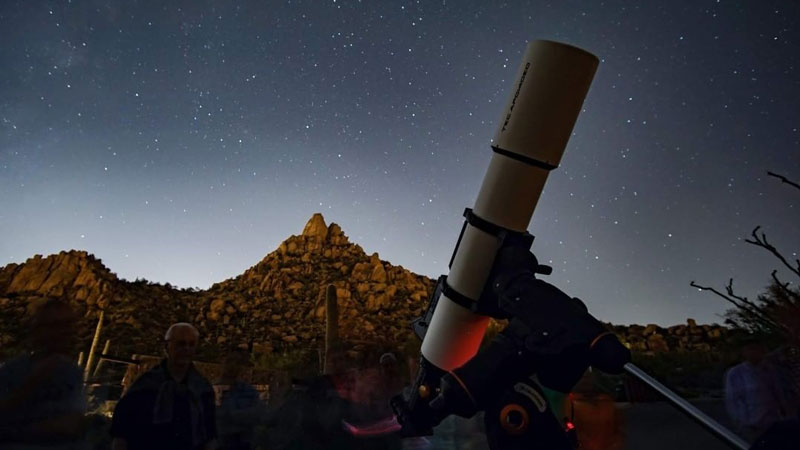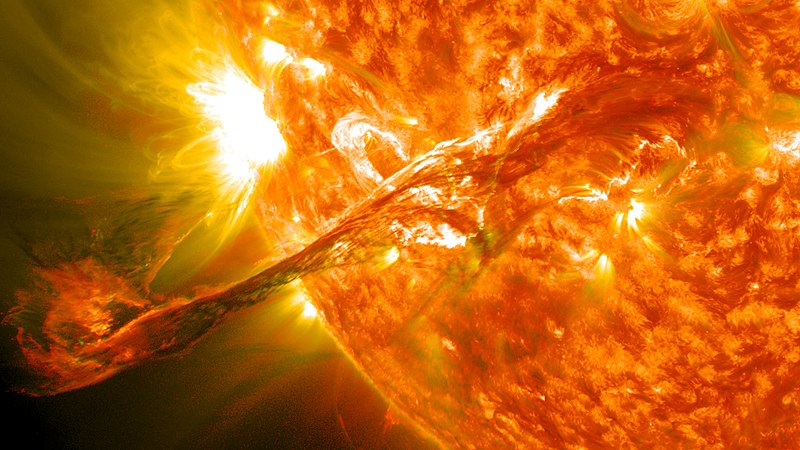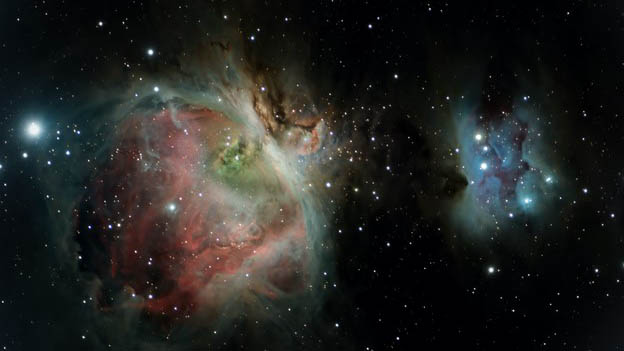Table of Contents

NASA Solar System Ambassador,
Astronomical League Master of Outreach,
Cruise ship speaker on Astronomy & space science,
Amateur astronomer and photographer for 50 years
What is Night Vision Astronomy?
Night vision astronomy is the technique of using a light-amplification device to either replace or augment your telescope’s eyepiece. It’s adapting the night vision optics devices used by special forces to an astronomical application. It makes otherwise-invisible objects visible in real time, even in light-polluted locations.
All astronomical photos in this article were taken by the author using a Mod 3C night vision device on a 5.5” refractor using an iPhone in less than 30 seconds.

Why Night Vision Astronomy?
For decades I basically ignored dozens of beautiful deep space objects when observing from the city. Why? The local light pollution overwhelms the faint light from the galaxy or nebula. At best, you might get a ‘gray smudge’. In contrast, I can easily see the Horsehead nebula visually with my 5.5” F7 refractor from the city using night vision.
Night vision gives you the advantages of more aperture, without having more aperture. It gives you great views of galaxies, globular clusters, and nebula, from light polluted locations. You can easily see objects otherwise ‘out of reach’ of your telescope. It also helps you pull in very large objects, for example the Rosette or California nebulas, that would be otherwise too large to fit in your telescope’s field of view.

What’s the Catch?
Price is the biggest hurdle, as these devices are very complex and sophisticated. Expect to pay $4000 or more for a quality unit. Certain types are also ITAR-restricted for use only in the US. They are also monochromatic, so you won’t see color. And while there is a huge gain brightness, there is also a reduction in image quality, so stars aren’t quite as sharp.

What Kinds of Night Vision Devices are there?
The two main types are Mod 3C and PVS14 monoculars. The Mod3C design is more flexible but requires sourcing your own lens if you want to use Afocally.
They were originally designed for the military, so are not simple to adapt to astronomy.
| Mod3C | PVS14 |
| Detachable C-mount lens | Integrated lens |
| Can be used Afocally or at prime focus | Must be used Afocally |
| May be ITAR Export restricted (US only) | Available worldwide |
What Kind of Performance Should I Expect?
These devices have a typical light gain >60,000x, so the difference is dramatic. Note that each tube is unique and has its own individual spec sheet. Performance can differ from one to another, and you may pay a premium for a ‘unicorn’ tube!

Unless you live under a very dark sky, you will rarely use a night vision device without a filter. There are two principle types of filters:
a) Bandpass filters
- Blocks light pollution and increases contrast
- Good for globular clusters, galaxies, open clusters
- Many good suppliers (Astronomik or Lumincon for example)
b) Narrowband filters
- Most often you’ll use a Hydrogen Alpha filter
- Typically bandpass of 5-12 nm
- Necessary to see emission nebulas
Who are some suppliers?
- https://tnvc.com/
- https://www.abnightvision.com/
- https://ultimatenightvision.com/
- https://www.nightvision4less.com/
- https://www.ovni-nightvision.com/en/ (Europe)
To Learn More
- The most popular forum for night vision observers
https://www.cloudynights.com/forum/139-night-vision-astronomy/ - Join Night Vision Astronomy Facebook group to see recent images https://www.facebook.com/groups/560810581015455/
- A good general overview
http://pwang.io/hobbies/astro/nightvision/





